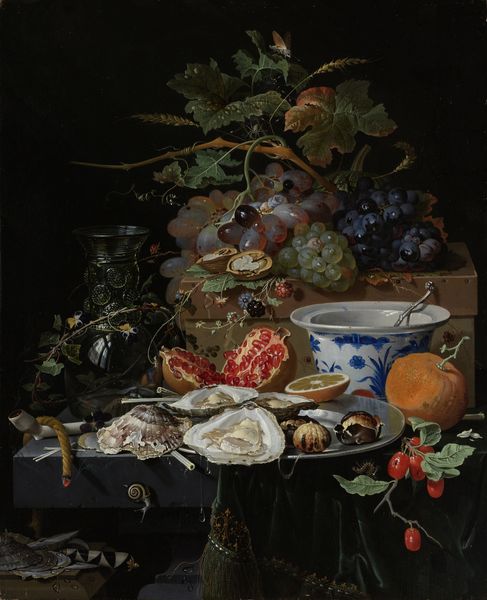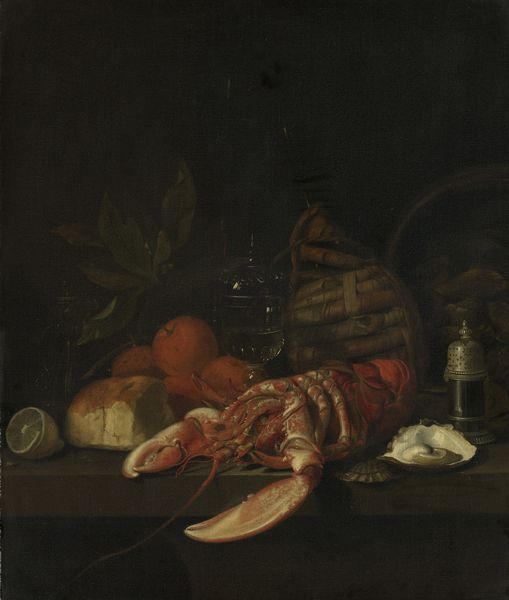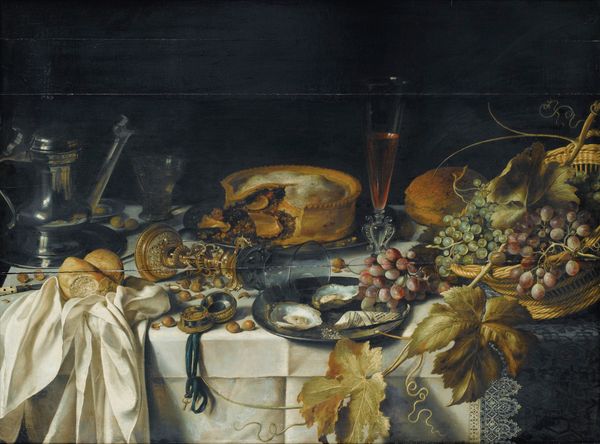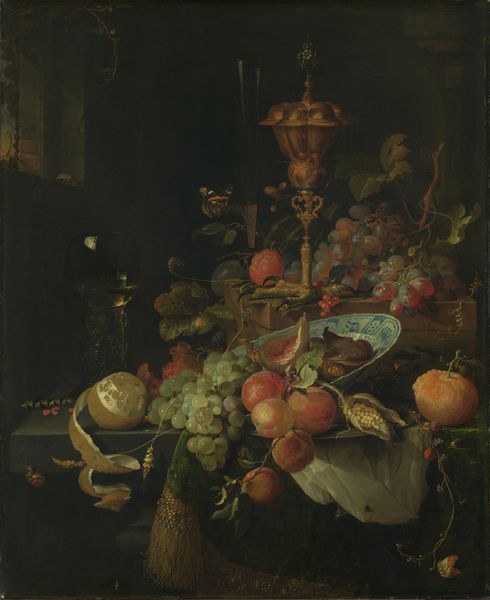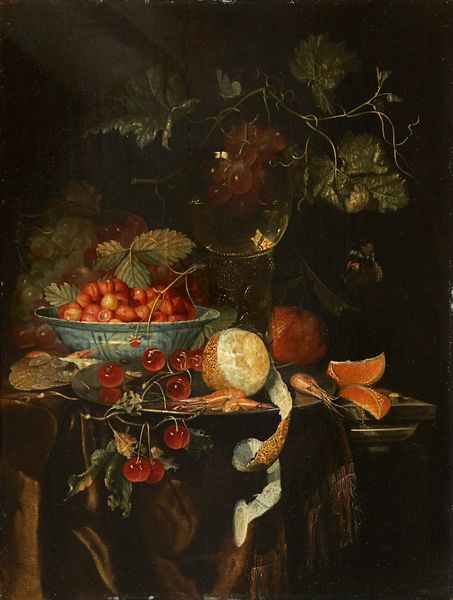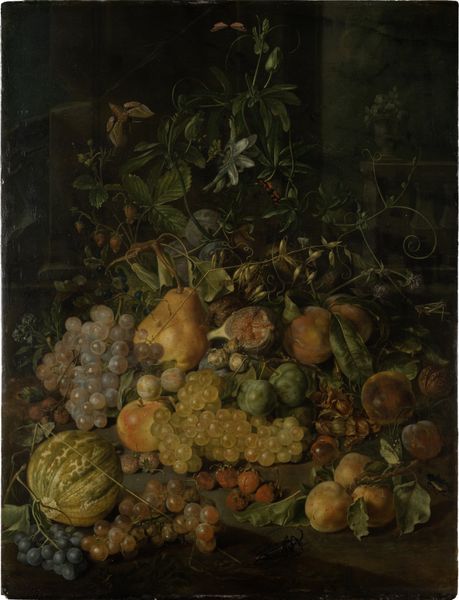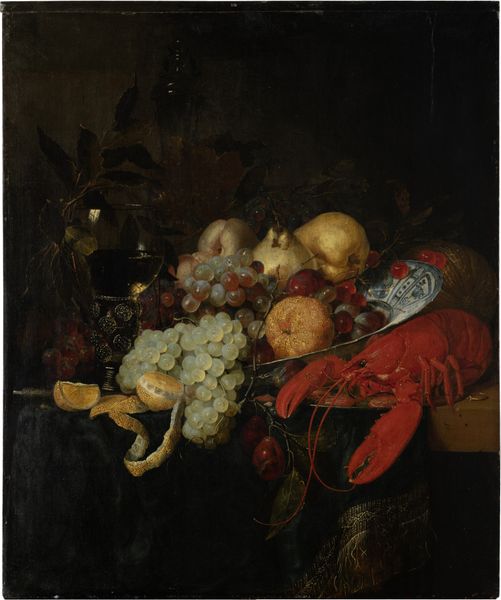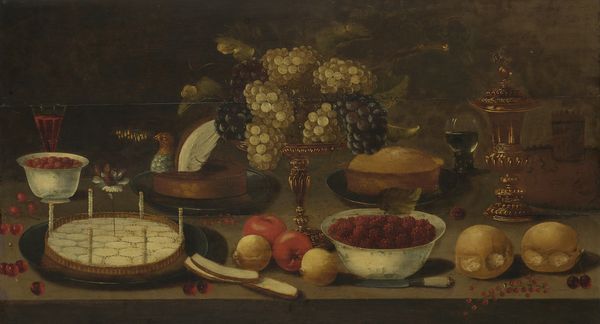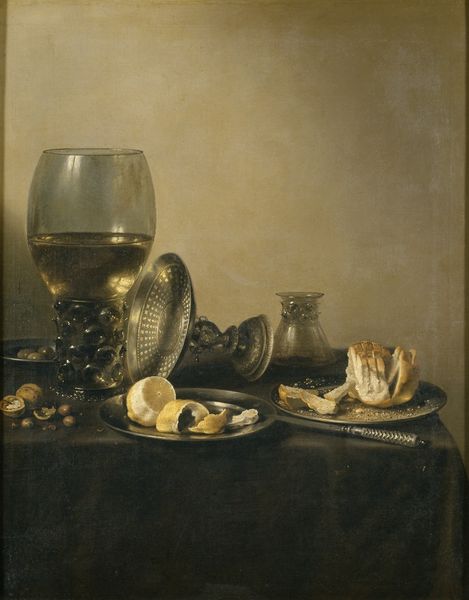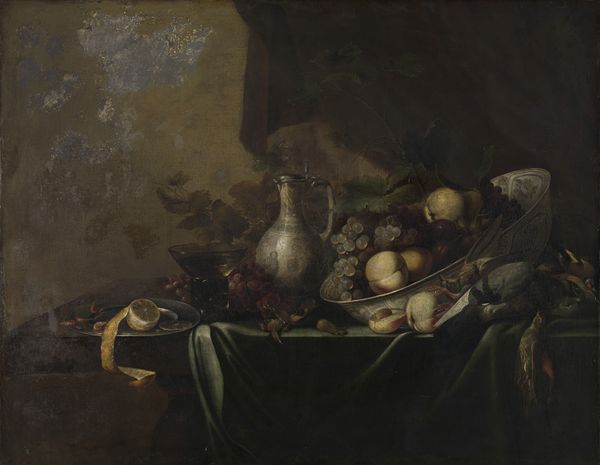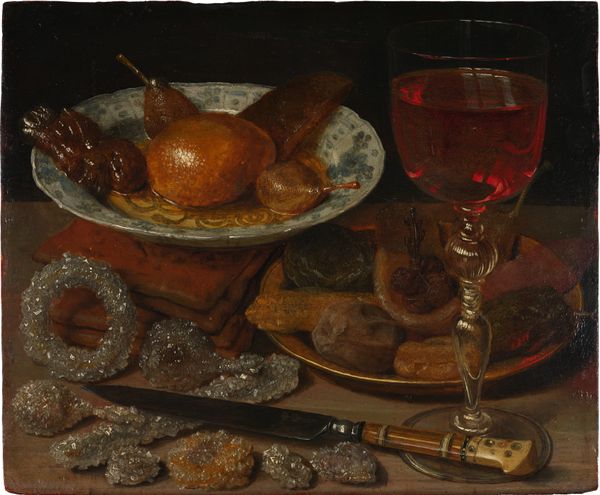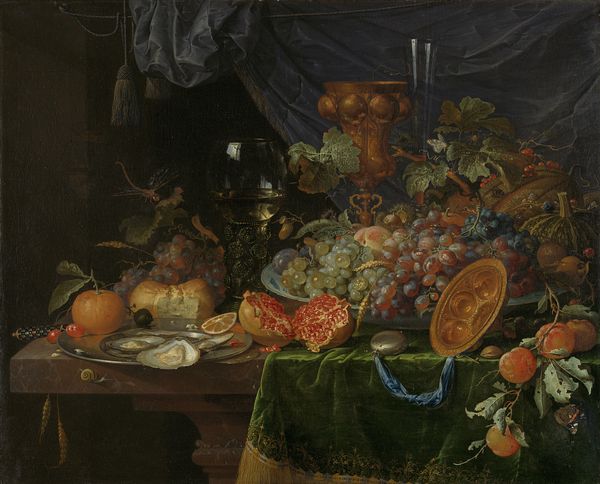
Oysters, Fruit and a Wineglass on a Stone Table 1671 - 1679
0:00
0:00
oil-paint
#
baroque
#
dutch-golden-age
#
oil-paint
#
oil painting
Dimensions: 45 cm (height) x 34.5 cm (width) (Netto), 61.2 cm (height) x 51.2 cm (width) x 3.5 cm (depth) (Brutto)
Editor: This is "Oysters, Fruit and a Wineglass on a Stone Table," painted between 1671 and 1679 by Abraham Mignon, using oil paint. It has such a somber, dark atmosphere. What do you see in the way the objects are arranged? Curator: Immediately, the formal arrangement captures attention. Mignon orchestrates a composition around contrasting textures and shapes. Note the rough exterior of the oyster shells against the smooth, reflective surfaces of the glassware. It’s a play between the natural and the artificial. Editor: Yes, and the light seems to emphasize that contrast even further. Curator: Precisely. Consider how the artist manipulates light to create depth and volume. The light isn't just illuminating; it’s sculpting the objects, highlighting their three-dimensionality. Look closely at how Mignon uses chiaroscuro. Can you discern a deliberate pattern? Editor: Well, there's definitely a strong contrast, with light mostly concentrated on the fruit and oysters, pulling them forward. The background is practically black. Curator: Exactly. The dark background throws the items forward. Beyond mere representation, it calls consideration for structure, composition, light, shadow, and material reality. The texture itself— the palpable smoothness or roughness of objects — functions semantically. Editor: It's amazing how much can be communicated through the most subtle formal elements. I’m viewing still life differently now! Curator: Indeed. Appreciating such elements unveils dimensions far surpassing surface recognition. The real voyage of discovery consists not in seeking new landscapes, but in having new eyes.
Comments
statensmuseumforkunst almost 2 years ago
⋮
How the German still life painter Abraham Mignon (1640-79), demonstrated his talent for giving form to intangible phenomena in nature on the flat canvas is wonderfully exemplified in Oysters, Fruit and a Wineglass on a Stone Table. Here one sees the transitory character of nature in the smoke that rises from the incandescent fire-lighter, and in the food, as a slimy droplet from the oyster shells is heavy and solid in its fall. Mignon has obviously spent time studying these phenomena by careful observation. The painting technique is crystal clear. In the roemer goblet’s edge, one glimpses tiny dots of precisely deposited white paint. Perhaps Mignon wanted to paint the individual particles of water vapor that catch the light. Mignon thinks in an open and a closed version of all foods so as to emphasize the body's density. When one observes what kind of fruits Mignon has chosen, and in particular how he has chosen to paint them, one is suddenly struck by the extent to which the shape is conceived as geometry. Mignon has painted the fruits as if they were echoes of geometric figures or even echoes of Plato's five solids or polyhedrons. The orange has been peeled so that the cut of the knife emphasizes the triangular shape of the individual pieces. The geometry of the prismatic pomegranate cores is painted with accentuated regularity. The orange ‘lanterns’ of the winter cherries also speak to a geometric order of nature. Mignon allows the objects to light up a darkened room, letting the food be a light source in itself, as if they were made of divine material. Still lifes with or without food were much in demand in their own time, and in the eras that followed, artists have continued to gain inspiration from the infinite beauty they represent. Painting food in the 17th century was not just a matter of creating aesthetic wall decorations for the fine parlors of the bourgeoisie. The immense beauty of the paintings would please the audience, moving them by way of visual deception, but perhaps they also instructed about a higher metaphysical order. At a time when the photograph had not yet been invented, the art-loving and art-purchasing clientele was overwhelmed and held spellbound in front of these still lifes, which, despite the flat canvas and the few resources needed to paint them, could look so true to life that one was almost cheated.
Join the conversation
Join millions of artists and users on Artera today and experience the ultimate creative platform.
